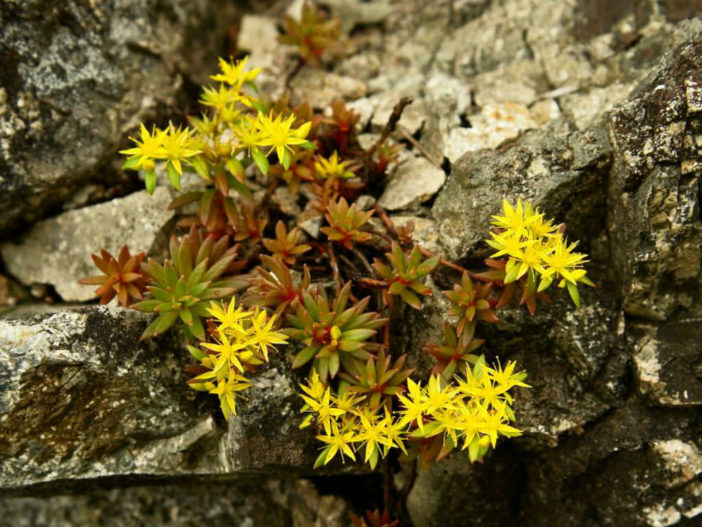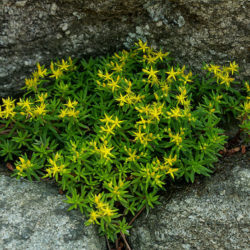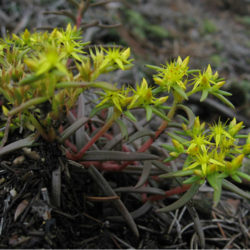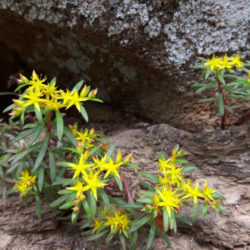Scientific Name
Sedum polytrichoides Hemsl.
Common Name(s)
Spanish Stonecrop
Synonym(s)
Sedum polytrichoides subsp. polytrichoides
Scientific Classification
Family: Crassulaceae
Subfamily: Sempervivoideae
Tribe: Sedeae
Genus: Sedum
Description
Sedum polytrichoides is a tufted succulent with slender, woody, ascending, densely leafy stems that can grow up to 4 inches (10 cm) long, branching from the base. The leaves are alternate, linear-lanceolate to oblong, measuring up to 0.6 inches (2 cm) long and 0.08 inches (0.2 cm) wide. They vary in color from green and gray-green to reddish or brownish.
The flowering stems are more remotely leafy than the sterile stems. The flowers are small, star-shaped with usually five yellow petals, and appear from mid-summer to early fall.
Origin
Sedum polytrichoides is native to China, Korea, Russia, and Japan. It grows near the coast and mountain forests in moist, rocky places in the shade.

Hardiness
USDA hardiness zone 8a to 10b: from 10 °F (−12.2 °C) to 40 °F (+4.4 °C).
How to Grow and Care
When growing Sedum, keep in mind that Sedum plants need very little attention or care. They will thrive in conditions many other plants thrive in but do just as well in less hospitable areas. They are ideal for that part of your yard that gets too much sun or too little water to grow anything else. A common name for Sedum is Stonecrop because many gardeners joke that only stones need less care and live longer.
Sedum is easily planted. For shorter varieties, simply laying the plant on the ground where you want it to grow is usually enough to get the Sedum plant started there. They will send out roots from wherever the stem touches the ground and root itself. If you want to ensure that the plant will start there, add a very thin covering of soil. You can break off one of the stems for taller Sedum varieties and push it into the ground where you want to grow it. The stem will root very easily, and a new plant will be established in a season or two.
See more at How to Grow and Care for Sedum.
Cultivars
Links
- Back to genus Sedum
- Succupedia: Browse succulents by Scientific Name, Common Name, Genus, Family, USDA Hardiness Zone, Origin, or cacti by Genus
Photo Gallery
Click on a photo to see a larger version.


